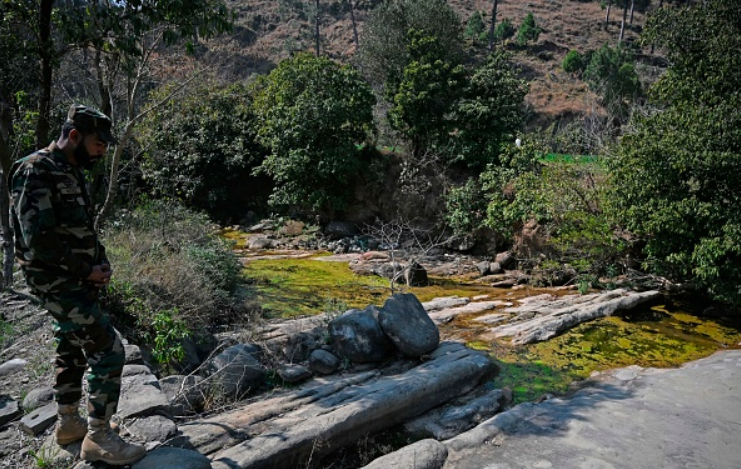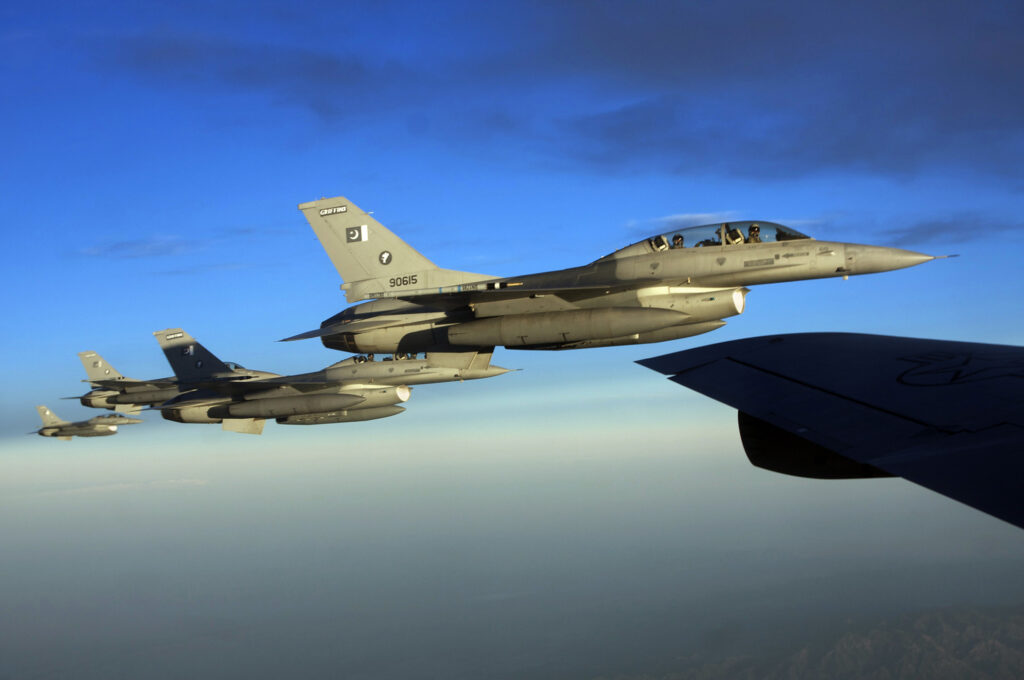
In the months following the February 2019 crisis between India and Pakistan, reports emerged that India had deployed its naval assets—including the nuclear powered submarine the INS Chakra and the nuclear powered ballistic missile submarine (SSBN) the INS Arihant—during the crisis. As resurfaced in a recent SIPRI report, India’s deployment of an SSBN, particularly in the midst of a crisis, has been seen in Pakistan as a move towards preemption. This assessment was reinforced by the Indian Army Chief statement in March 2020 that: “Balakot demonstrated that if you play the escalatory game with skill, military ascendancy can be established in short cycles of conflict that do not necessarily lead to war.”
For Pakistan, the lessons from 2019 represent a dangerous move towards limited war below the nuclear threshold. The crisis should by no means be upheld as an example of successful maneuvering as claimed by New Delhi—and policymakers should be careful to assume that any future escalatory games and attempts to achieve escalation dominance will remain within perceived limits. As even a limited nuclear exchange between India and Pakistan would have devastating global consequences, drawing the wrong conclusions from the crisis could prove to be perilous.
Limited War, Escalation Dominance, and Crisis Risks in South Asia
In a 2004 joint statement, India and Pakistan duly acknowledged that the overt nuclearization of South Asia has augmented stability, however, strategies for limited war continue to foster volatility. The idea of “limited war” is generally used to distinguish a conflict from “total war,” or imply a level of constraint in the political objective of a conflict, which determines its limited geographic scope and/or military means. The term was developed in the context of U.S.-Soviet competition in the Cold War, and many have since pointed to the high-levels of risks of limited conflict between two nuclear-armed states. As Henry Kissinger contended: “no war in the nuclear age can ever be completely free of the specter of nuclear weapons.”
For Pakistan, the lessons from 2019 represent a dangerous move towards limited war below the nuclear threshold. The crisis should by no means be upheld as an example of successful maneuvering as claimed by New Delhi—and policymakers should be careful to assume that any future escalatory games and attempts to achieve escalation dominance will remain within perceived limits.
The construct of limited war between India and Pakistan is concentrated on the unresolved Kashmir dispute. India accuses Pakistan of supporting militant groups in Kashmir and developed a limited war doctrine—commonly known as the Cold Start Doctrine (CSD)—meant to launch limited conventional attacks while remaining below Pakistan’s perceived nuclear threshold. The CSD was finally formally acknowledged by the former Indian Army Chief in January 2017 when he noted that: “Weaknesses can only be overcome if you accept the strategy…if you don’t accept the strategy, then you will let your weaknesses [limit you].” Pakistan in contrast views Kashmiris as fighting for freedom and self-determination in what it stresses in the recently released National Security Policy is “Indian Illegally Occupied Jammu and Kashmir.” The complexity of these dynamics makes “unresolved Kashmir” a nuclear flash point in South Asia.
Limited war strategies are also linked with escalation dominance, defined by the U.S. Air Force as creating an environment that raises the “cost of defiance” for the adversary and denies the opportunity to counter-escalate. While escalation has often been neatly conceptualized as a ladder—most notably in Herman Kahn’s pivotal work “On Escalation,” this metaphor has been increasingly brought into question. High-stakes and limited options can create a situation where desperate measures may be used beyond conceivable expectations. In South Asia, the challenges of escalation dominance are twofold. First, with a range of response options that could easily be misread by actors in a conflict, the crisis could escalate in multifarious directions without following the classic pattern of rungs on a ladder. Second, escalation is often more akin to falling than climbing a ladder—it is easy to escalate but hard to de-escalate.

The South Asian landscape has become more complex owing to a strategic culture based on rhetoric and warmongering behaviors. In the aftermath of the 2019 Kashmir crisis, Indian Prime Minister Modi boasted publicly of India possessing the “mother of all bombs.” Reports emerged later that Modi has also considered missile strikes after Pakistan captured an Indian pilot during an aerial dogfight. Even if such strikes had been with conventional missiles they could have easily been seen by Pakistan as a preemptive action or a nuclear strike. Had it not been restraint and responsible behavior on the part of Islamabad shown through the release of the captured pilot, escalation could have taken a different trajectory.
Crisis Lessons
While the February 2019 Kashmir crisis showed the risks of escalation, for Pakistan the crisis also reinforced the credibility of its deterrent which was seen as keeping India from expanding the crisis beyond an unsuccessful aerial strike driven by political incentives. Pakistan’s Full Spectrum Deterrence (FSD) successfully plugs the gaps that New Delhi seeks to exploit in nuclear environment. FSD reinforces deterrence at all tiers of strategic, operational, and tactical levels and it is these response options, which aim to deter India at all levels, that bring the international community, including the United States into South Asia to de-escalate and avert wider conflagration. From Islamabad’s perspective, it was a measured and calibrated response on its part that helped diffuse further escalation. However, had the Indian Air Force strike resulted in civilian casualties then there were all the chances of moving up the escalation ladder. The crisis therefore emphasizes that any limited war is flawed under the nuclear overhang. Pakistan sees strategic stability as a desired end result for durable peace in the region and remains open to consider risk reduction and confidence building measures which can avert instabilities.
The Kashmir crisis of 2019 further highlighted the need to implement measures that will help de-escalate tensions in the future; however there has been little progress in this regard. Since the crisis, India and Pakistan relations have shown little signs of improvement. The Kashmir issue remains the primary bone of contention between Islamabad and New Delhi, and the revocation of Jammu and Kashmir’s special status under Article 370 and 35A has only raised tensions. This has been further exacerbated the international community placing this issue on the backburner, instead stressing it as a bilateral issue to be resolved between India and Pakistan. Pakistan has continued to emphasize human rights violations in Kashmir and maintains the stance that durable peace is contingent on resolving the Kashmir dispute.
From Islamabad’s perspective, it was a measured and calibrated response on its part that helped diffuse further escalation. However, had the Indian Air Force strike resulted in civilian casualties then there were all the chances of moving up the escalation ladder.
There is a high risk of miscalculation in any future crisis in South Asia—this could be through situational fog, misunderstanding adversarial intentions, inadequate intelligence on combat strength, unexpected conventional attacks along frontiers, or acting for domestic political aims. The use of warmongering rhetoric by senior leadership of the ruling Bhartiya Janata Party (BJP) coupled with moves like the deployment of frontline naval assets, such as the INS Arihant armed with ballistic and potentially nuclear missiles, brings more complexity to already unstable environment. Such actions could supplement preemptive first-strike temptations. Restraint and responsible behavior should be the key rather than pursuing risky and aggressive strategies like Cold Start, proactive operations, or so-called surgical strikes. India taking the lesson from the Balakot crisis that limited war is effective and escalation is controllable would be a dangerous conclusion. Further, while these risky operations may have supported electoral gains domestically for Modi’s more nationalist BJP, the mischaracterization of the Balakot airstrike—such as unfounded claims of shooting down an F-16 and destroying an alleged terrorist camp in Balakot—hurt India’s image and credibility abroad.
Deterrence stability is the most viable alternative to avert war in the absence of arms control or confidence building measures. Assured second-strike capabilities could have better chances to help assuage concerns about preemptive actions. However, high arms acquisition levels amidst growing a great power competition, expansion and modernization of arms and delivery vehicles, and emerging technologies continue to weaken the regional security environment. These changing dynamics paired with drawing the wrong conclusions from 2019 crisis and Pakistan’s rising concerns of India moving towards preemption, set South Asia on a dangerous pathway in any future crisis.
Brigadier Imran Hassan is Director at Arms Control and Disarmament Affairs, Strategic Plans Division, Pakistan. He is a graduate of Command and Staff College, Quetta; Quaid-i-Azam University, Islamabad and the Naval Post Graduate School, Monterey. He also holds an MPhil in Strategic Studies from National Defence University. He is former visiting research fellow for South Asia (Strategic Affairs) at International Institute of Strategic Studies, London. The views expressed by the author are his own.
Editor’s Note: This article is part of a four-part series featuring reflections from senior analysts and policymakers in the United States, India, Pakistan, and China on the lessons learned from the 2019 Pulwama/Balakot Crisis. Read the full series here.
***
Image 1: AAMIR QURESHI/AFP via Getty Images
Image 2: Robert Sullivan via Flickr


